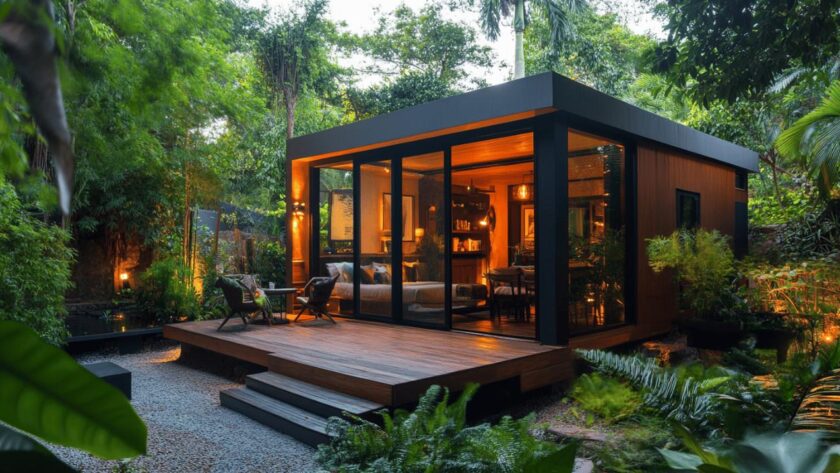Transforming your home into a sustainable living space not only helps protect the environment but also creates a healthier living environment while reducing utility costs. As more homeowners become environmentally conscious, sustainable home improvements have gained significant popularity in recent years. This comprehensive guide explores practical and effective ways to make your living space more eco-friendly and energy-efficient.
Energy-efficient upgrades
Making your home more energy-efficient is perhaps the most impactful way to create a sustainable living space. According to experts at casajedo.es, energy-efficient homes not only reduce carbon emissions but can also significantly lower utility bills and potentially increase property value. The UK Green Building Council’s research suggests that homes with better energy performance may qualify for lower mortgage rates and command higher resale values.
Smart thermostats and energy monitoring systems
Smart home technology has revolutionized how we manage energy consumption. Intelligent thermostats learn your schedule and preferences, automatically adjusting temperatures to optimize comfort while minimizing energy use. These devices can be controlled remotely via smartphone apps, allowing you to make adjustments even when away from home. Energy monitoring systems provide real-time data on electricity usage, helping identify energy-hungry appliances and changing usage patterns to reduce consumption.
High-performance windows and insulation
Proper insulation and high-quality windows are fundamental to energy efficiency. Double or triple-glazed windows significantly reduce heat transfer, keeping homes warmer in winter and cooler in summer. Meanwhile, upgrading insulation in walls, attics, and floors prevents energy wastage by maintaining indoor temperatures. These improvements create a more comfortable living environment while reducing the need for heating and cooling systems to work overtime.
Water conservation solutions
Water is an increasingly precious resource, making conservation efforts essential for sustainable living. Implementing water-saving solutions throughout your home can dramatically reduce consumption without sacrificing convenience or comfort.
Low-flow fixtures and appliances
Replacing standard fixtures with low-flow alternatives is a simple yet effective water conservation strategy. Modern low-flow showerheads, faucets, and toilets can reduce water usage by 30-50% compared to conventional models. Energy-efficient washing machines and dishwashers also play a crucial role, using significantly less water per cycle while delivering excellent performance. These upgrades offer an excellent return on investment through reduced water bills.
Rainwater harvesting systems
Collecting and reusing rainwater represents a sustainable approach to water management. Rainwater harvesting systems capture precipitation from rooftops, storing it for later use in gardening, toilet flushing, or laundry. These systems range from simple rain barrels to sophisticated setups with filtration and pumps. For regions experiencing drought conditions, rainwater harvesting provides a reliable supplementary water source while reducing demand on municipal supplies.
Eco-friendly materials
The materials used in home construction and renovation significantly impact environmental sustainability. Choosing eco-friendly alternatives reduces resource depletion and minimizes exposure to potentially harmful chemicals.
Reclaimed and recycled building materials
Incorporating reclaimed wood, recycled metal, and repurposed materials into home improvements adds character while reducing environmental impact. Salvaged architectural elements like doors, windows, and fixtures give homes unique charm while keeping valuable materials out of landfills. Recycled content products, including countertops made from recycled glass or plastic lumber for decking, offer durability while utilizing post-consumer waste. These materials often tell a story and create distinctive design elements that mass-produced alternatives cannot match.
Non-toxic paints and finishes
Traditional paints and finishes often contain volatile organic compounds (VOCs) that emit harmful gases into your home. Low or zero-VOC alternatives provide excellent coverage and durability without compromising indoor air quality. Natural finishes derived from plant oils, waxes, and mineral pigments offer beautiful results while being environmentally responsible. These products have improved dramatically in recent years, providing performance comparable to conventional options without the associated health and environmental concerns.
Renewable energy integration
 Generating clean energy at home represents a significant step toward sustainability. Renewable energy systems reduce reliance on fossil fuels while providing long-term energy security and cost savings.
Generating clean energy at home represents a significant step toward sustainability. Renewable energy systems reduce reliance on fossil fuels while providing long-term energy security and cost savings.
Solar panel installation basics
Solar power has become increasingly accessible for homeowners, with improved technology and declining costs making it a practical option. A typical residential solar system includes panels, inverters, mounting hardware, and monitoring equipment. The installation process involves assessment, design, permitting, installation, and final inspection. While the initial investment is substantial, government incentives, tax credits, and utility savings can make solar financially attractive over the system’s 25-30 year lifespan.
Battery storage options
Energy storage systems allow homeowners to maximize the benefits of renewable energy by storing excess production for later use. Home batteries capture surplus electricity generated during peak production periods, making it available during evenings or cloudy days. Modern storage solutions offer smart features like load shifting and backup power during outages. As battery technology advances and prices decrease, these systems are becoming essential components of home renewable energy setups.
Indoor air quality improvements
The air inside homes often contains higher pollutant concentrations than outdoor air, making indoor air quality a crucial consideration for sustainable living spaces. Implementing strategies that enhance ventilation and reduce contaminants creates healthier living environments.
Natural ventilation strategies
Designing homes to maximize air circulation reduces the need for mechanical ventilation while improving indoor air quality. Strategic window placement creates cross-ventilation, while skylights and clerestory windows facilitate stack effect ventilation. Ceiling fans enhance air movement, improving comfort while using minimal energy. These passive approaches work with the building’s design and local climate to maintain fresh air exchange naturally.
Air-purifying plants and materials
Certain houseplants naturally filter air pollutants, converting carbon dioxide to oxygen while removing toxins. Popular air-purifying varieties include snake plants, peace lilies, and spider plants. Beyond plants, choosing materials that don’t off-gas harmful chemicals prevents pollution at the source. Natural fibers for upholstery and bedding, solid wood furniture, and mineral-based building materials contribute to cleaner indoor air while bringing natural elements into the home.
Sustainable landscaping
Extending sustainability principles to outdoor spaces completes the eco-friendly home. Thoughtful landscaping conserves water, supports local ecosystems, and reduces maintenance requirements.
Native plant gardens
Gardens featuring locally adapted plants create beautiful, low-maintenance landscapes that support native wildlife. Native species have evolved to thrive in local soil and climate conditions, requiring less water, fertilizer, and pest control than exotic alternatives. These plants provide essential habitat and food sources for local birds, butterflies, and beneficial insects. A well-designed native garden connects your property to the broader ecosystem while reducing resource inputs.
Drip irrigation and xeriscaping
Water-efficient landscaping techniques dramatically reduce outdoor water consumption. Drip irrigation delivers water directly to plant roots, minimizing evaporation and runoff. Xeriscaping principles include grouping plants with similar water needs, mulching extensively, and minimizing turf areas. These approaches create attractive landscapes that thrive with minimal irrigation, perfect for regions experiencing water restrictions or drought conditions. The resulting gardens require less maintenance while staying beautiful throughout changing seasons.

